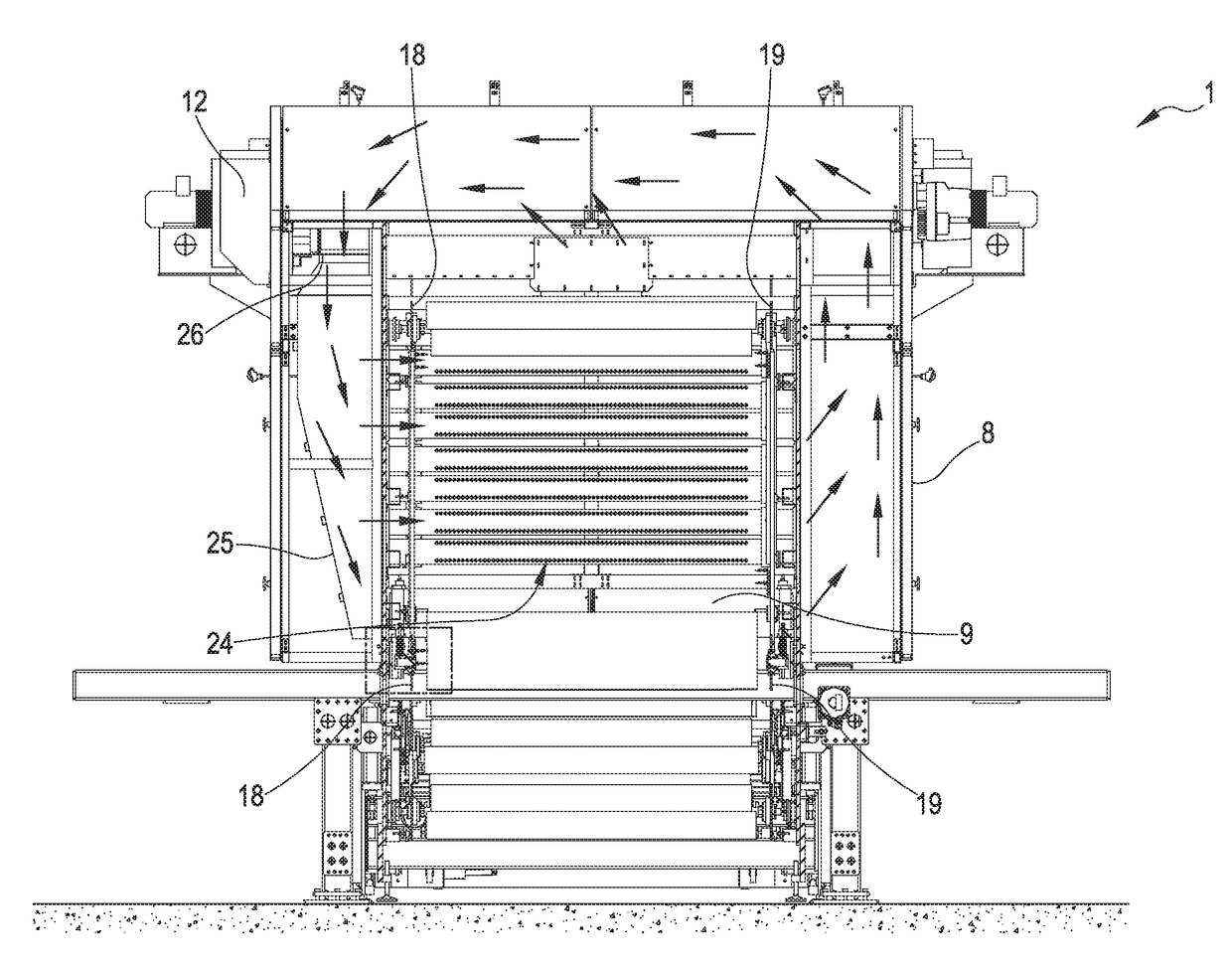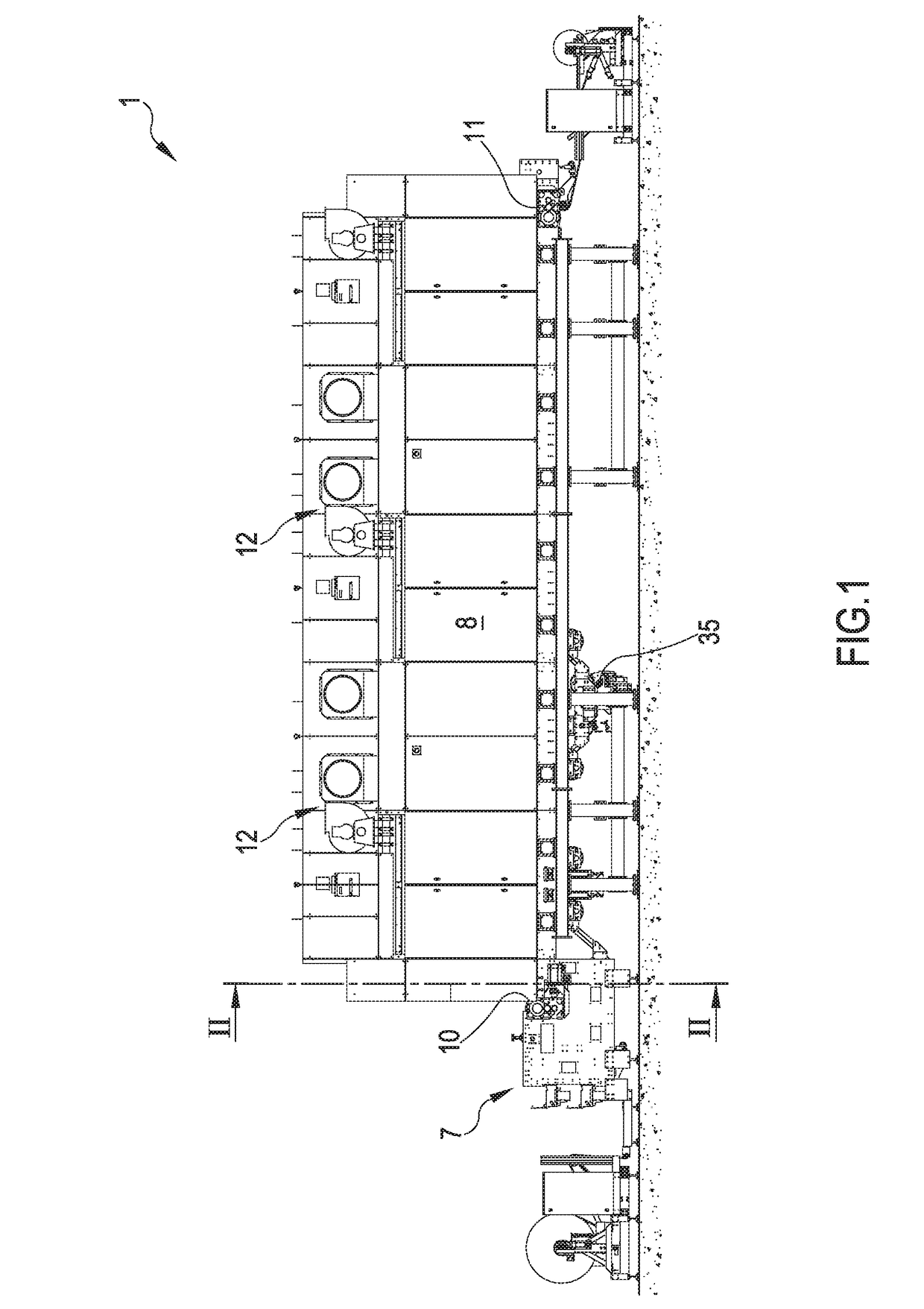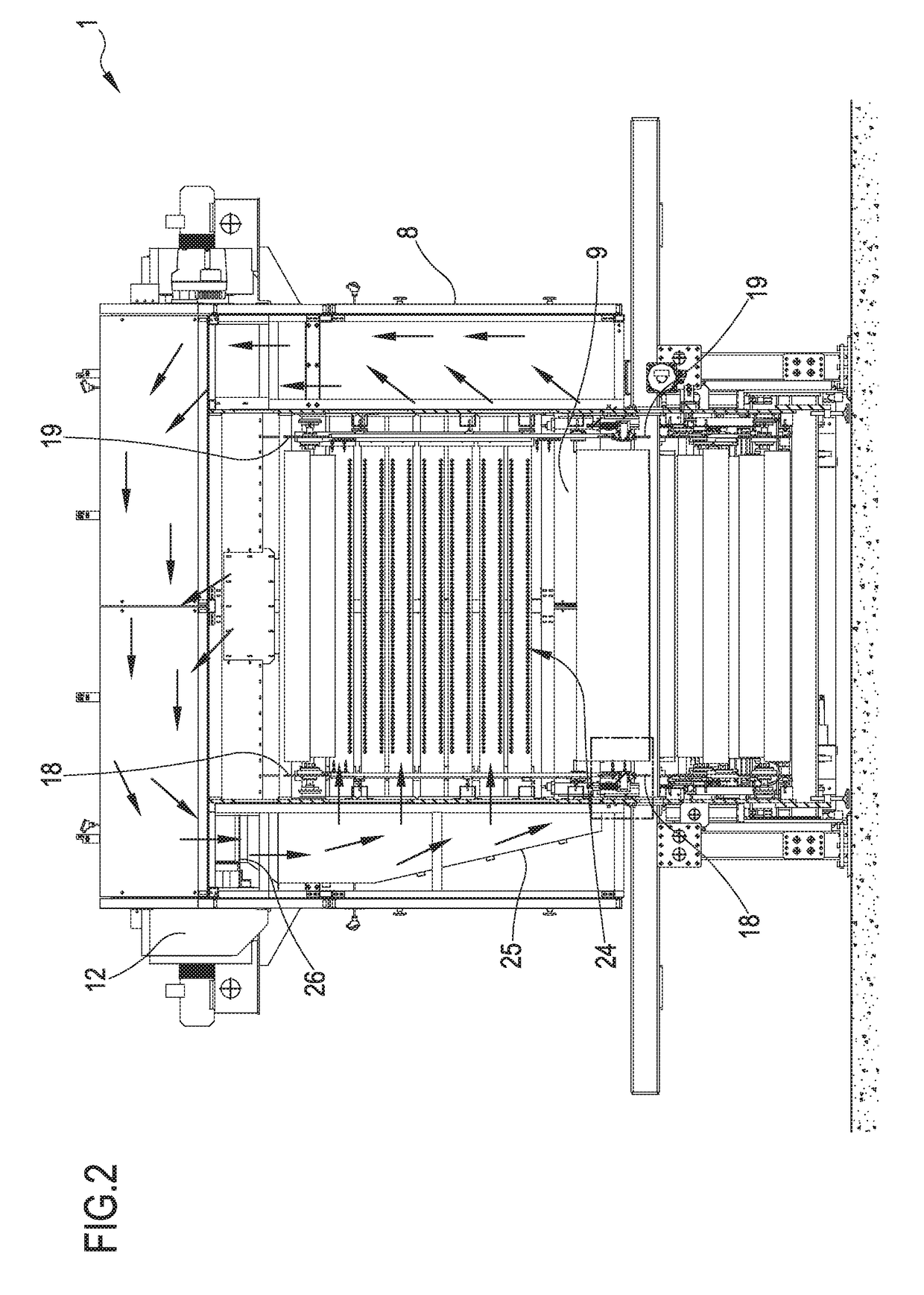Treating a fibrous material for printing
a technology of fibrous materials and printing, applied in textile treatment carriers, lighting and heating apparatus, drying machines with progressive movements, etc., can solve the problems of direct addition of additives, development of chemical or physical properties that are not easily manageable,
- Summary
- Abstract
- Description
- Claims
- Application Information
AI Technical Summary
Benefits of technology
Problems solved by technology
Method used
Image
Examples
Embodiment Construction
[0049]Reference 1 generally indicates an apparatus for treating a fibrous material T having a sheet shape and destined to be printed, for example by digital printing. The apparatus 1 is useable for treating a sheet fibrous material, for example consisting of or comprising a fabric and / or a non-woven fabric, before an ink-printing process on at least one side of said sheet. Generally but in a non-limiting way, the apparatus 1 can be useful in the textile or knitted fabric or non-woven fabric industry for preparing a material to be ink-printed.
[0050]As is visible in FIG. 4, apparatus 1 comprises at least one conveyor belt 2 movable along a closed path, particularly between at least one first and one second terminal idler members 3, 4 along a predetermined advancement direction A. The conveyor belt 2 has a structure having two dimensions: length and width, substantially prevalent with respect to a third dimension, such as the thickness; the length is defined along the belt 2 advancemen...
PUM
| Property | Measurement | Unit |
|---|---|---|
| time | aaaaa | aaaaa |
| time | aaaaa | aaaaa |
| diameter | aaaaa | aaaaa |
Abstract
Description
Claims
Application Information
 Login to View More
Login to View More - R&D
- Intellectual Property
- Life Sciences
- Materials
- Tech Scout
- Unparalleled Data Quality
- Higher Quality Content
- 60% Fewer Hallucinations
Browse by: Latest US Patents, China's latest patents, Technical Efficacy Thesaurus, Application Domain, Technology Topic, Popular Technical Reports.
© 2025 PatSnap. All rights reserved.Legal|Privacy policy|Modern Slavery Act Transparency Statement|Sitemap|About US| Contact US: help@patsnap.com



